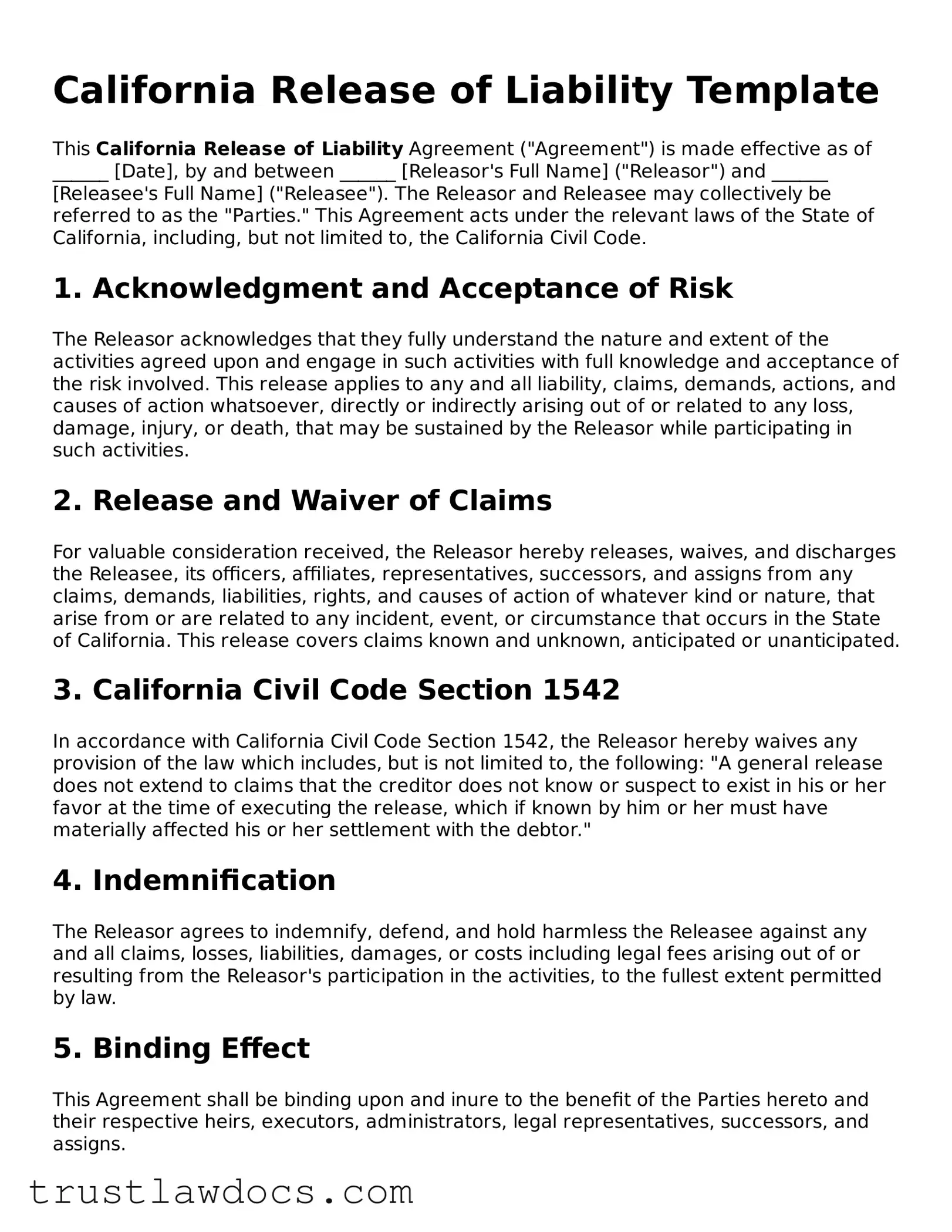California Release of Liability Template
This California Release of Liability Agreement ("Agreement") is made effective as of ______ [Date], by and between ______ [Releasor's Full Name] ("Releasor") and ______ [Releasee's Full Name] ("Releasee"). The Releasor and Releasee may collectively be referred to as the "Parties." This Agreement acts under the relevant laws of the State of California, including, but not limited to, the California Civil Code.
1. Acknowledgment and Acceptance of Risk
The Releasor acknowledges that they fully understand the nature and extent of the activities agreed upon and engage in such activities with full knowledge and acceptance of the risk involved. This release applies to any and all liability, claims, demands, actions, and causes of action whatsoever, directly or indirectly arising out of or related to any loss, damage, injury, or death, that may be sustained by the Releasor while participating in such activities.
2. Release and Waiver of Claims
For valuable consideration received, the Releasor hereby releases, waives, and discharges the Releasee, its officers, affiliates, representatives, successors, and assigns from any claims, demands, liabilities, rights, and causes of action of whatever kind or nature, that arise from or are related to any incident, event, or circumstance that occurs in the State of California. This release covers claims known and unknown, anticipated or unanticipated.
3. California Civil Code Section 1542
In accordance with California Civil Code Section 1542, the Releasor hereby waives any provision of the law which includes, but is not limited to, the following: "A general release does not extend to claims that the creditor does not know or suspect to exist in his or her favor at the time of executing the release, which if known by him or her must have materially affected his or her settlement with the debtor."
4. Indemnification
The Releasor agrees to indemnify, defend, and hold harmless the Releasee against any and all claims, losses, liabilities, damages, or costs including legal fees arising out of or resulting from the Releasor's participation in the activities, to the fullest extent permitted by law.
5. Binding Effect
This Agreement shall be binding upon and inure to the benefit of the Parties hereto and their respective heirs, executors, administrators, legal representatives, successors, and assigns.
6. Governing Law
This Agreement shall be governed by and construed in accordance with the laws of the State of California, without giving effect to any choice or conflict of law provision or rule.
7. Signature
This agreement is acknowledged and agreed upon by the Parties through their signatures below:
Releasor's Signature: _____________________________________ Date: ________________
Releasee's Signature: _____________________________________ Date: ________________
